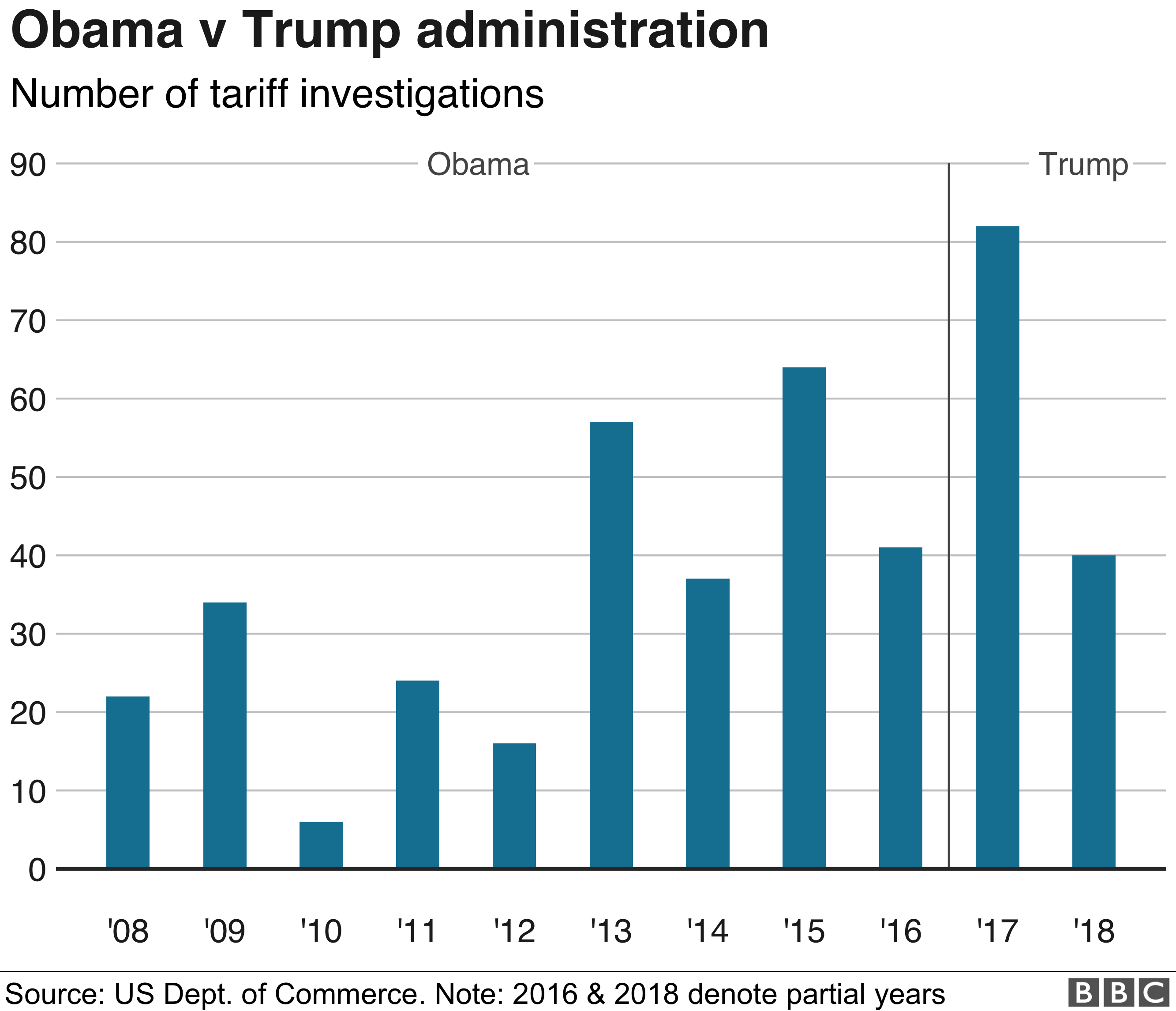Trump Tariffs: CEO Concerns And The Impact On Consumers

Table of Contents
CEO Concerns Regarding Trump Tariffs
The Trump administration's tariffs triggered widespread concern among CEOs across various sectors. The uncertainty, increased costs, and reduced competitiveness created a challenging business environment.
Increased Production Costs
Tariffs on imported materials led to significantly higher production costs for many businesses. This increase impacted profitability and competitiveness.
- Increased prices for raw materials: Companies reliant on imported components saw a dramatic increase in their input costs. This was particularly true for manufacturers using steel, aluminum, and other metals.
- Supply chain disruptions: Tariffs disrupted established supply chains, forcing companies to seek alternative, often more expensive, suppliers. This added complexity and cost to the production process.
- Reduced profit margins: The higher costs of production squeezed profit margins, impacting businesses' ability to invest and expand.
- Difficulties competing with companies sourcing from countries without tariffs: American companies faced a disadvantage against competitors in countries not subject to the same tariffs, leading to a loss of market share.
Specific industries like manufacturing and agriculture were disproportionately affected. The manufacturing sector, heavily reliant on imported steel and other materials, experienced significant price increases, impacting production and profitability. Similarly, the agricultural sector faced retaliatory tariffs on its exports, further exacerbating the economic challenges.
Reduced Global Competitiveness
Higher prices resulting from the Trump tariffs made American goods less competitive in international markets. This had far-reaching consequences for businesses and the economy as a whole.
- Loss of export markets: American companies found it increasingly difficult to compete on price in global markets, leading to a decline in exports.
- Decreased market share: Competitors from countries unaffected by the tariffs gained market share, further harming American businesses.
- Potential job losses in export-oriented industries: As exports declined, many export-oriented industries faced job losses and reduced economic activity.
Companies heavily reliant on exports, such as those in the agricultural and automotive sectors, suffered significant setbacks due to reduced competitiveness and retaliatory tariffs imposed by other nations. For example, the imposition of tariffs on American soybeans by China led to substantial losses for American farmers.
Uncertainty and Investment Hesitation
The unpredictable nature of the Trump tariff policies created significant uncertainty, discouraging investment and long-term planning. This volatility negatively impacted business decisions and economic growth.
- Delayed capital expenditures: Companies delayed or canceled investments in new equipment, facilities, and technology due to the uncertain business environment.
- Reduced hiring: Businesses became hesitant to hire new employees due to the uncertain outlook and the potential for reduced profitability.
- Stalled expansion plans: Ambitious expansion plans were put on hold or abandoned entirely, stifling economic growth.
This uncertainty had a significant impact on investor confidence and the stock market. The volatility associated with the tariff policies led to increased market uncertainty and reduced investor enthusiasm, impacting overall economic growth.
Impact of Trump Tariffs on Consumers
The Trump tariffs did not just impact businesses; they also had a significant effect on consumers, leading to higher prices, reduced choice, and overall economic uncertainty.
Increased Prices for Goods and Services
Tariffs directly increased the cost of imported goods, leading to higher prices for consumers. This inflationary pressure eroded purchasing power and consumer confidence.
- Inflationary pressure: The increased cost of imported goods contributed to inflationary pressures, eroding the purchasing power of consumers.
- Reduced purchasing power: Higher prices for everyday goods reduced consumer purchasing power, forcing consumers to cut back on spending.
- Decreased consumer confidence: The uncertainty and higher prices led to a decline in consumer confidence, further dampening economic activity.
Consumers saw price increases on a wide range of goods, including steel, aluminum products, clothing, and consumer electronics. These increases disproportionately impacted lower-income households, reducing their ability to afford essential goods and services.
Reduced Consumer Choice
Some imported goods became unavailable or less accessible due to tariffs. This limited consumer choice and potentially impacted consumer satisfaction.
- Limited selection: Consumers found themselves with a reduced selection of goods, as some imported items became too expensive or unavailable.
- Higher prices for substitutes: Consumers were forced to pay higher prices for domestic substitutes, if available, for goods previously imported at lower costs.
- Potential for shortages: In some cases, tariffs led to shortages of specific goods, creating inconvenience and frustration for consumers.
Retaliatory Tariffs and Global Trade Wars
Trump tariffs prompted retaliatory tariffs from other countries, harming both American exporters and consumers. This escalation of trade tensions negatively impacted global trade.
- Reduced export opportunities: American exporters faced reduced access to international markets due to retaliatory tariffs.
- Increased import costs: Retaliatory tariffs increased the cost of imports, further fueling inflation and reducing consumer purchasing power.
- Overall negative impact on global trade: The trade war disrupted established trade relationships and created uncertainty in the global economy, hindering economic growth.
The retaliatory tariffs imposed by China, the European Union, and other trading partners significantly impacted American exporters and exacerbated the negative economic effects of the initial tariffs.
Conclusion
The Trump tariffs generated considerable concern among CEOs due to increased costs, reduced competitiveness, and uncertainty. Simultaneously, consumers faced higher prices, reduced choice, and the disruption caused by retaliatory tariffs. The overall effect was a dampening of economic growth and global trade. The long-term consequences of these protectionist policies continue to be debated and analyzed by economists and policymakers.
Understanding the long-term implications of trade policies like the Trump tariffs is crucial. Further research into the effects of protectionist measures on businesses and consumers is needed to inform future economic decisions and avoid repeating similar mistakes. Continue to explore the complexities of Trump tariffs and their lasting impact, examining both the immediate and long-term effects on the American and global economies. Analyzing the data and learning from these experiences is essential for navigating future trade negotiations and building a more stable and prosperous global marketplace.

Featured Posts
-
 Stock Market Valuation Concerns Bof A Offers A Different Perspective
Apr 26, 2025
Stock Market Valuation Concerns Bof A Offers A Different Perspective
Apr 26, 2025 -
 Department Of Justice Seeks 87 Month Sentence For George Santos
Apr 26, 2025
Department Of Justice Seeks 87 Month Sentence For George Santos
Apr 26, 2025 -
 Les 18 Laureats Des Prix Cecobois 2025 Le Meilleur Du Bois Et Du Bois D Uvre Canadiens Francais
Apr 26, 2025
Les 18 Laureats Des Prix Cecobois 2025 Le Meilleur Du Bois Et Du Bois D Uvre Canadiens Francais
Apr 26, 2025 -
 Chelsea Handler Dodged A Bullet The Andrew Cuomo Dating Story
Apr 26, 2025
Chelsea Handler Dodged A Bullet The Andrew Cuomo Dating Story
Apr 26, 2025 -
 Krogkommissionens Recension Stockholm Stadshotell En Detaljerad Genomgang
Apr 26, 2025
Krogkommissionens Recension Stockholm Stadshotell En Detaljerad Genomgang
Apr 26, 2025
